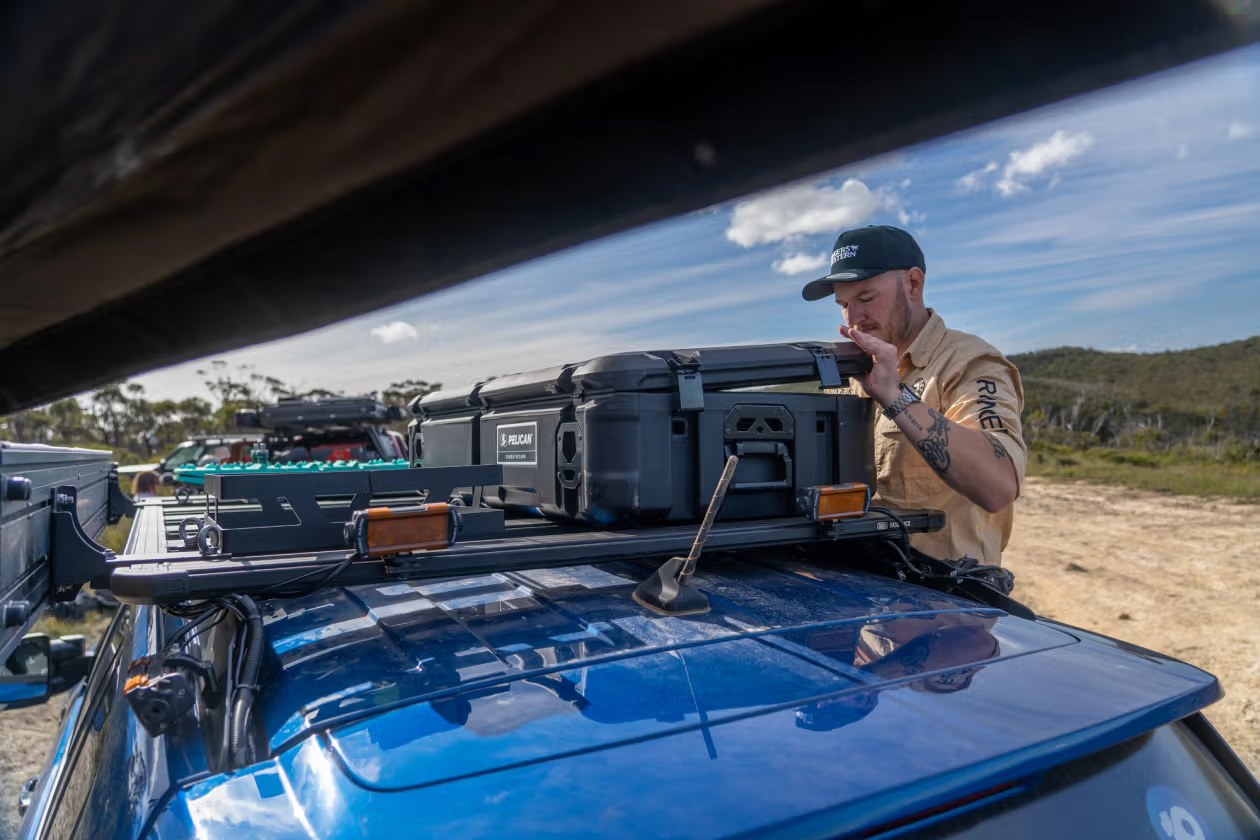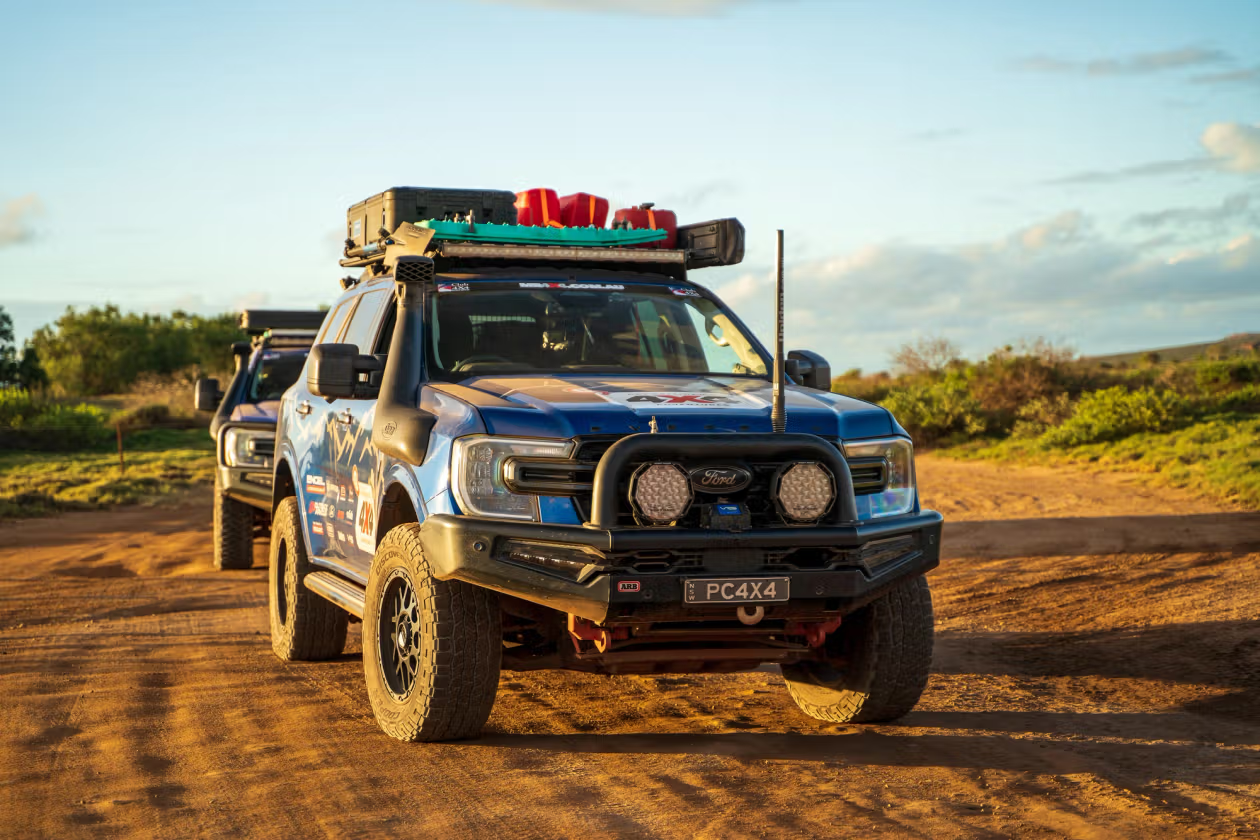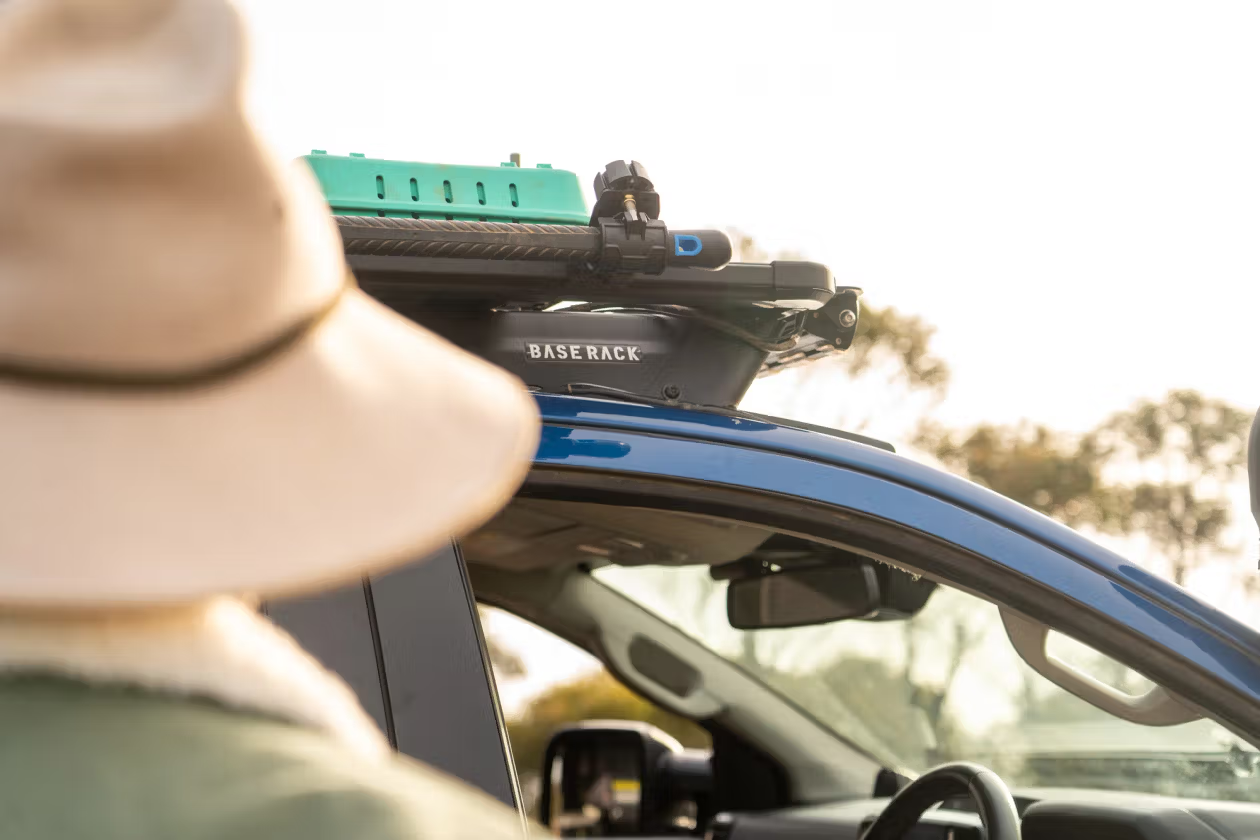When it comes to decking out your 4X4 for the ultimate adventure, a roof rack often tops the list of must-have accessories. Whether it’s for mounting a rooftop tent, hauling a kayak, or just cramming in those extra jerry cans and recovery gear, roof racks are an absolute game-changer for expanding your storage. But here’s the catch: not all roof racks (or your vehicle’s roof) are created equal when it comes to load capacities.
To keep your setup safe and legal, it’s crucial to understand the difference between dynamic load capacity and static load capacity. Let’s dive into what these terms mean, how they affect your setup, and why overloading your roof is a recipe for disaster.

roof rack storage box off road touring
What Is Dynamic Load Capacity?
Dynamic load capacity refers to the weight your roof rack can safely support while the vehicle is moving. This takes into account forces like wind resistance, corrugations, and the shifting of weight when cornering or braking. A loaded roof rack impacts your vehicle’s centre of gravity, stability, and even fuel efficiency, so staying within the dynamic load limit is vital for safe driving.
For most vehicles, dynamic load capacities are surprisingly low - usually between 50kg and 100kg. That includes the weight of the roof rack itself! So, before you start stacking up the swag and solar panels, check your vehicle’s manual and the roof rack specifications to avoid exceeding the limit.
Why is the dynamic limit important?
Let’s put it this way: holding a 10kg sledgehammer might feel manageable when it’s stationary, but try swinging it around in a circle. Suddenly, the forces acting on it multiply, and it feels far heavier. The same principle applies to your roof rack. As you drive, G-forces caused by cornering, braking, or hitting uneven terrain make your load effectively much heavier than its static weight. Now imagine driving over corrugations—every bump sends your rack bouncing up and down, essentially "hammering" the roof of your vehicle like that same sledgehammer pounding on sheet metal.
This can cause cracks, damage to mounting points, and even a complete failure of your roof rack. And that’s before you consider the effect on your handling—too much weight up top can turn your rig into a wobbly nightmare, particularly in off-camber situations.

loaded 4wd off road adventure outback australia
What Is Static Load Capacity?
Static load capacity, on the other hand, refers to the weight your roof rack can handle when the vehicle is stationary. This is the key number for things like rooftop tents. When you’re parked up for the night, a roof rack can typically support a much higher load because it isn’t dealing with the dynamic forces of driving.
Most roof racks can handle three to five times their dynamic load capacity when stationary. So, if your dynamic load is 100kg, your static load might be 300kg or more. This extra capacity is what allows you and your partner to sleep comfortably in a roof top tent without the whole thing crashing down in the middle of the night.
Why Is The Static Limit Important?
While the static limit is higher, it still needs to be respected. For example, if you exceed the static capacity with an overloaded rooftop tent setup, you risk damaging your vehicle’s roof structure, gutters, or mounting points. And let’s not forget, all that weight has to come off before you hit the road again - so planning for both static and dynamic limits is critical.
Practical Considerations For Your Setup
Know Your Vehicle’s Limits
Every 4X4 has a manufacturer-specified roof load limit, which includes the roof rack. This limit often surprises people - it’s not uncommon for popular touring to have maximum roof loads of 100kg or less. Check your manual and factor in the weight of the rack itself.
Choose the Right Roof Rack
Not all roof racks are equal. Platform racks like the ARB Base Rack tend to distribute weight more evenly than traditional basket-style racks. Make sure the rack you choose is rated for your intended load and compatible with your vehicle.
Consider Weight Distribution
When loading your roof rack, keep the heaviest items close to the centre and spread the weight evenly. Avoid top-heavy setups that can destabilise your vehicle, particularly when off-road.
Secure Your Load Properly
Use rated tie-down straps or ratchet straps to secure your gear. Avoid bungee cords - they don’t provide enough tension and can snap under strain. Double-check your load before driving, especially if you’ve been driving on corrugations.
Plan for Dynamic and Static Loads
If you’re running a rooftop tent, calculate the total weight of your tent, bedding, and occupants to ensure it’s within the static load capacity. For dynamic loads, consider the weight of gear like recovery boards, awnings, or jerry cans and how they’ll impact handling.
Noise
When you put anything onto your roof, wind noise should always be a consideration. I once had a Rhino-Rack that would render phone calls at 100km/h a virtual impossibility. The person on the other end of the line would yell “Just call me back later”. Keep in mind that your hands-free microphone sits right under the rack. But it’s not just the roof rack that makes noise, it can also be the attachments you bolt on, like lights and awnings. Experimentation may be required when locating items. But generally speaking, the further forward the accessory sits, the more noise it makes. My ARB BASE Rack I’ve been using for the last few years is comfortably the quietest I’ve used. I’d recommend hunting around online to seek other people’s opinions on noise, as it varies between vehicles and can be a deal breaker.

arb base rack
The Bottom Line
Your roof rack is one of the most versatile tools in your 4X4 arsenal, but understanding its load capacities is crucial for safety and performance. Always work within the dynamic and static load limits of your vehicle and roof rack, and remember: overloading isn’t just unsafe - it’s illegal. A well-thought-out roof setup will keep you adventuring confidently, whether you’re tackling Cape York or just heading to the local campsite.
Keep the shiny side up!
Pat
Heading off the beaten track?
Get comprehensive insurance that can go there too.


